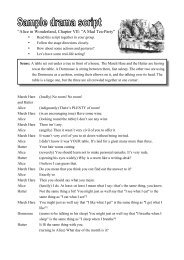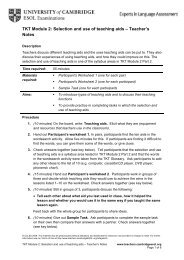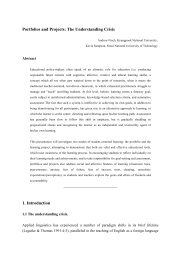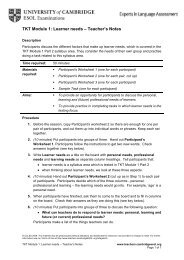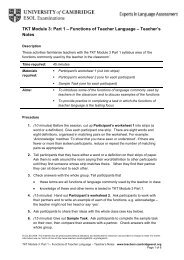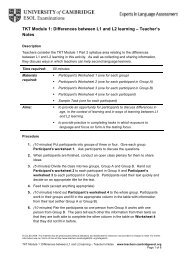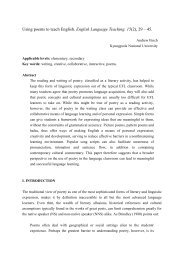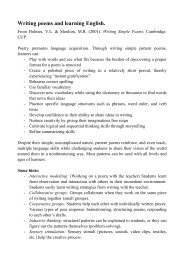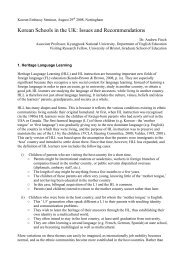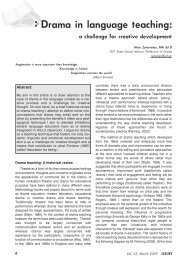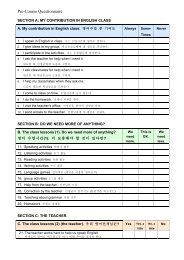Working towards TKT Module 1 - Finchpark
Working towards TKT Module 1 - Finchpark
Working towards TKT Module 1 - Finchpark
- No tags were found...
Create successful ePaper yourself
Turn your PDF publications into a flip-book with our unique Google optimized e-Paper software.
FATHER:SON:But d’you understand it?Yeah. Can I go and play with Tom?To help us understand spoken language we need to use the context the language isspoken in and our knowledge of the world. In this example, our knowledge of relationshipsbetween fathers and sons, and of children’s attitudes to homework helps us understand, but ifwe knew the context of the conversation (e.g. the place where it took place, the father’s andson’s body language, their attitudes to homework), we would understand more.When we listen, we also need to be able to understand different kinds of spoken texttypes such as conversations, stories, announcements, songs, instructions, lectures andadvertisements. They contain different ways of organising language and different languagefeatures, and some consist of just one voice while others consist of more.We also need to understand different speeds of speech. Some people speak moreslowly and with more pauses. Others speak fast and/or with few pauses. This makes themmore difficult to understand. We need to understand different accents too (e.g. Scottish orAustralian English).But we do not listen to everything in the same way. How we listen depends on ourreason for listening. We might listen for gist, specific information, detail, attitude (listeningto see what attitude a speaker is expressing), or do extensive listening.From Spratt, M, Pulverness, A and Williams, M (2005) The <strong>TKT</strong> Course, Cambridge: CambridgeUniversity Press, pp.30–1.Make notes of the points from the Key Concepts.WORKING TOWARDS <strong>TKT</strong> MODULE 1 EMC/7032c/0Y09 11



